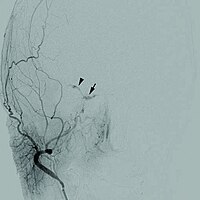
Photo from wikipedia
This study is aimed toward estimating the lifetime risks, life expectancy, expected years of life lost (EYLL), and lifetime costs related to different subtypes of stroke in South Korea. We… Click to show full abstract
This study is aimed toward estimating the lifetime risks, life expectancy, expected years of life lost (EYLL), and lifetime costs related to different subtypes of stroke in South Korea. We included 13,994 patients diagnosed with stroke (ICD-10, I60-I63) in the National Health Insurance Service-National Sample Cohort of Korea between 2006 and 2015. Lifetime risks were calculated using the cumulative incidence rate for patients aged 18–84. Lifetime survival data were obtained through the Kaplan–Meier method and extrapolated with a rolling-over extrapolation algorithm. The lifetime costs were estimated by multiplying the average monthly expenditures with the survival probabilities and adding the values over lifetime. The lifetime risks of stroke in Korea have been decreasing consistently over the last decade with the exception of subarachnoid hemorrhage in females, which appears to have slightly increased. The EYLL is higher in hemorrhagic stroke than in ischemic stroke (6–9.7 vs. 4.7). Expected lifetime costs reimbursed by the NHIS would amount to about $71,406 accompanied with $14,921 copayment from the patients for hemorrhagic stroke, and $50,551 and $11,666, respectively, for ischemic stroke. Further studies are warranted to combine survival with quality of life and functional disability to obtain a more detailed outcome assessment of the potential impact of the prevention of stroke.
Journal Title: Scientific Reports
Year Published: 2020
Link to full text (if available)
Share on Social Media: Sign Up to like & get
recommendations!